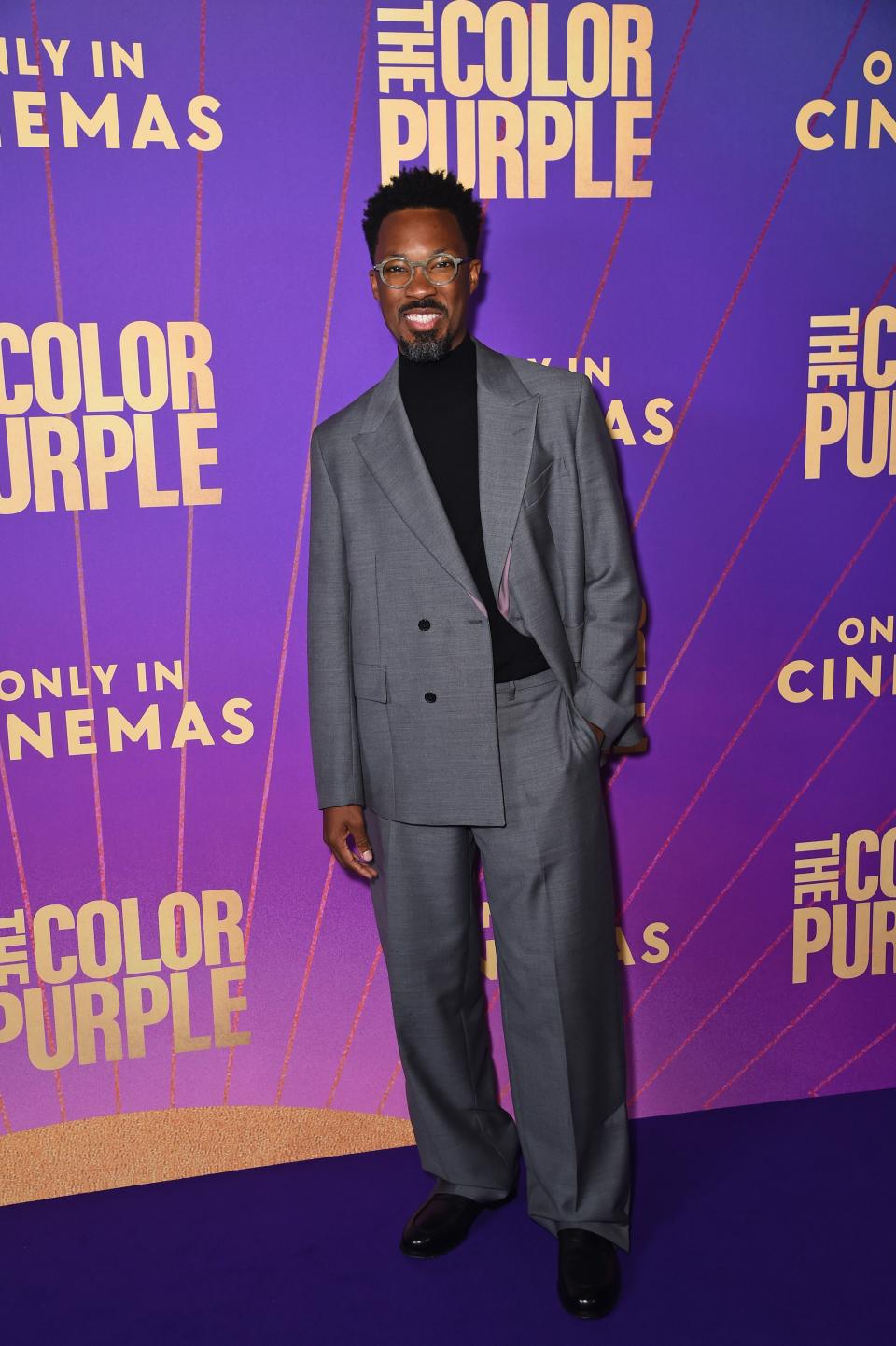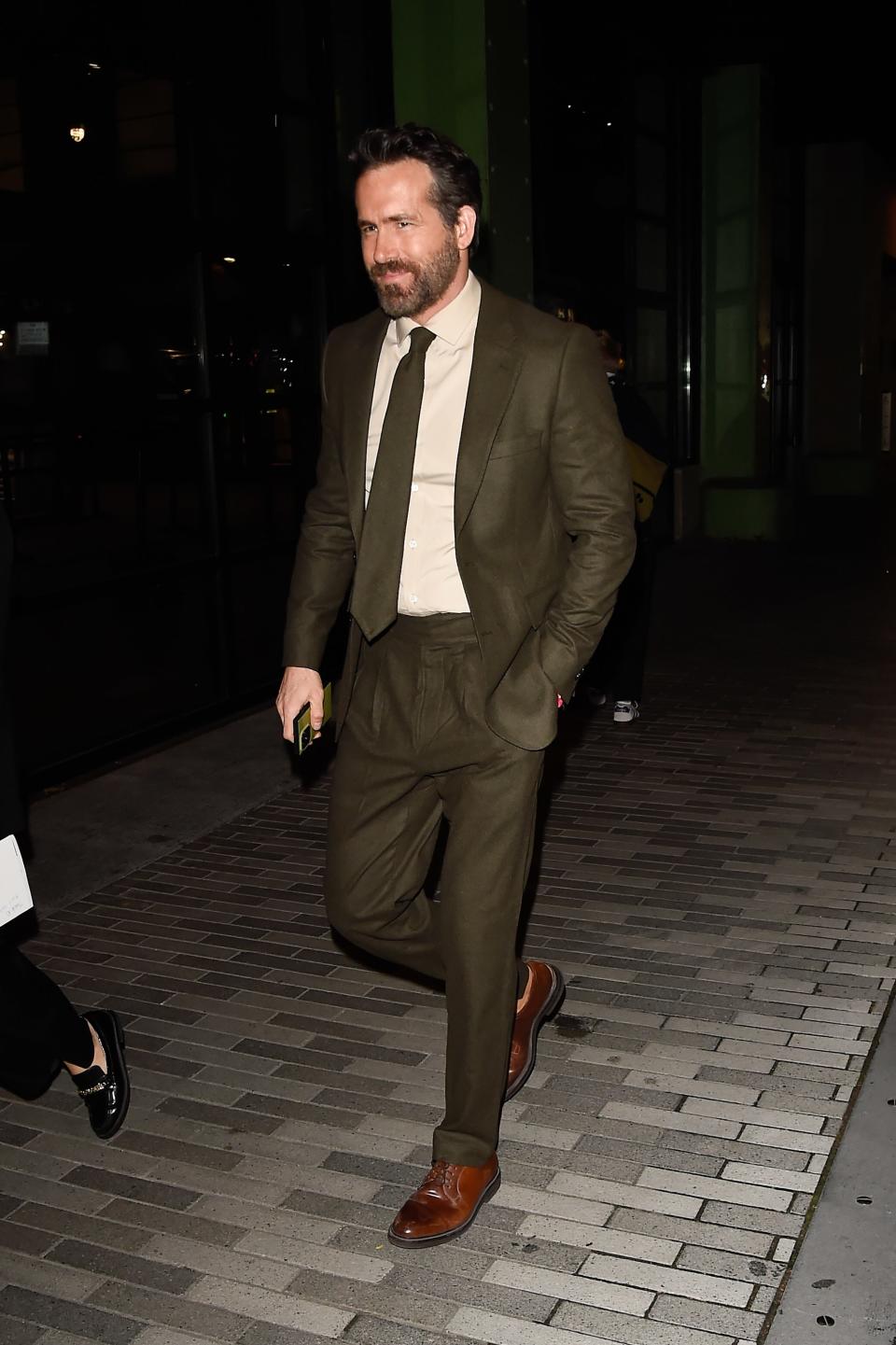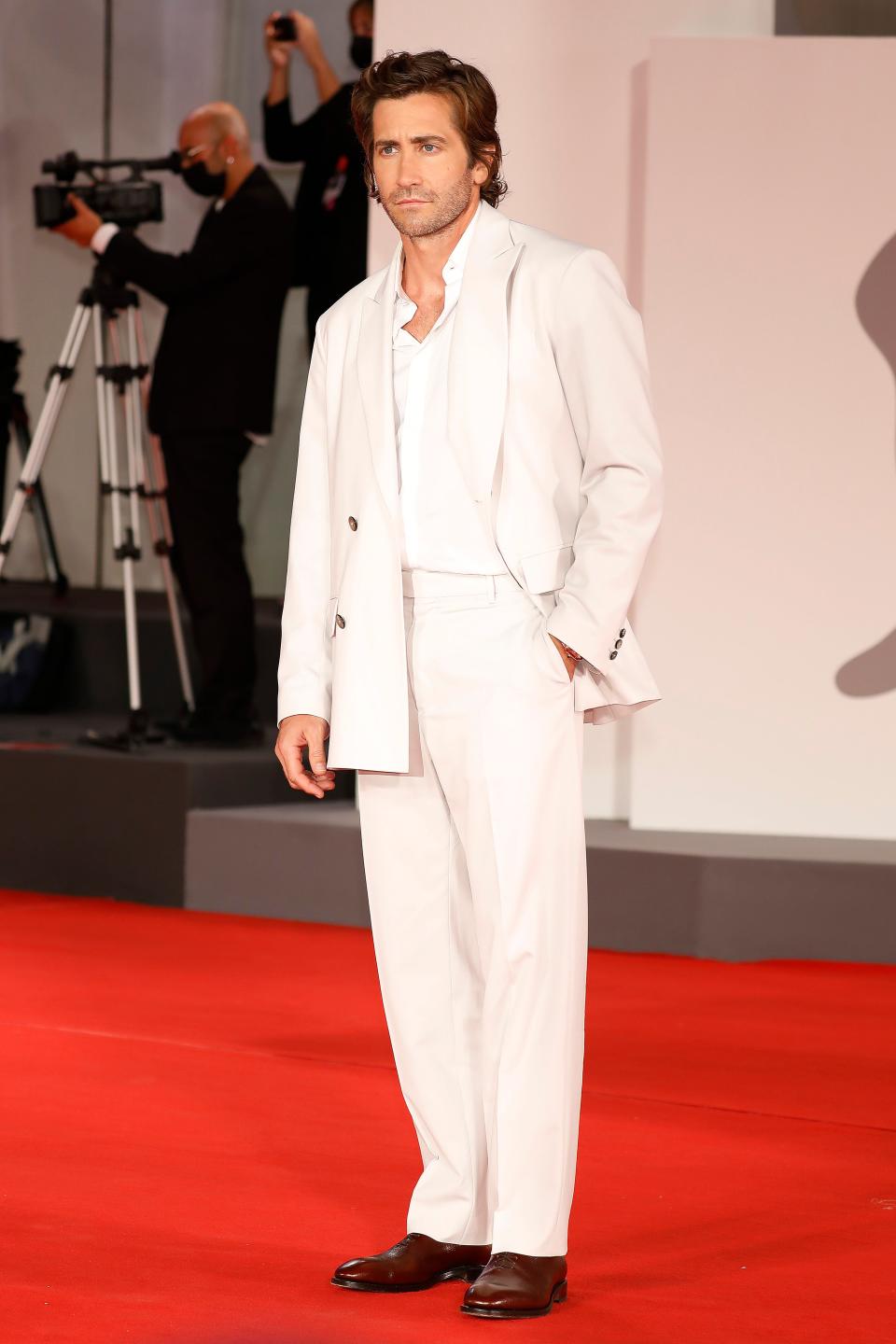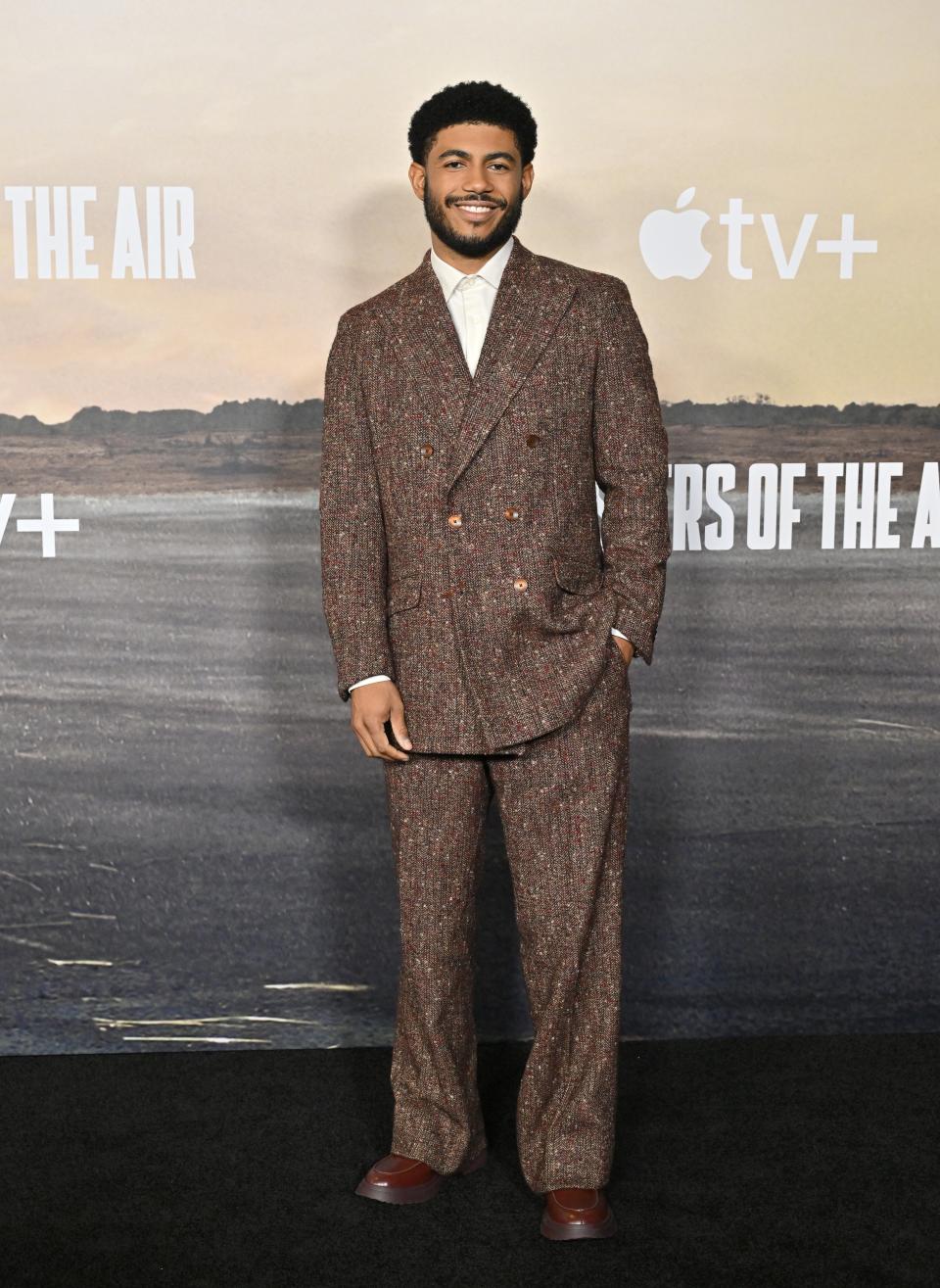These Are the Best Fabrics for a Suit, According to Tailoring Experts

GQ; Courtesy of Drake's
Shopping for a suit can feel like learning an entirely new language. You go in looking for a simple two-piece, and you wind up trying to decipher what “half-canvassed” means and wondering whether your jacket should have one vent or two. To help you navigate the ins and outs of the tailoring world, we’ll be exploring each individual aspect of a suit—from the fit to fabric to the pockets—with a little help from the most stylish experts in the sartorial space. Welcome to GQ’s Tailoring 101.
For those inclined to think deeply about the ways a suit should fit or the best number of buttons a double-breasted blazer should have, there’s no limit to the amount of time you can spend. (And if that sounds like fun, you should probably start hanging out with more tailors.) There’s one element of the suit, however, without which none of the rest would matter: the fabric. Fabric not only provides the physical building blocks of every suit but also much of its personality. And, befitting such an important element of tailoring, there’s a lot to know about it.
There is a whole universe of fabric choices at your disposal, and which one you choose will determine not just how a suit looks, but also how it feels. Some fabrics lend themselves to dandyish nonchalance (see: seersucker, corduroy) while others carry more C-suite gravitas (see: Super 180s worsted wool). There are also fabrics that are better for hot, humid weather (see: linen, tropical wool) and ones that are made to keep you warm on blustery winter days (see: tweed, flannel). Each of these has its own distinctive texture (called the “hand” in tailoring-speak) and a set of unique pros and cons from durability to price. Here are the fabrics you’re most likely to encounter, and how to incorporate each into your wardrobe:
Worsted Wool
The most common and versatile of the bunch and your best bet for everyday wear. “Worsted” refers to the type of combed yarn used to weave this cloth, which is made of longer fibers that give it a smoother feel (basically the polar opposite of a chunky wool sweater). There are countless styles, weights, and weaves of worsted wool, not to mention blends with everything from polyester to elite fibers like cashmere, mohair and silk. Worsted wool is also usually ranked by a “Super” number system (ie Super 100s, Super 120s, Super 150s), with the number increasing according to the fineness of the yarns used to weave the cloth.

VIP Screening Of "The Color Purple"
Eamonn M. McCormack/Getty ImagesFlannel
One of the most iconic fabrics in menswear, with a distinctively fuzzy texture known as a “nap” that makes it feel softer against your skin. This woolen fabric’s unique texture makes it great for fall and winter, but also makes it more prone to pilling, and generally less durable than worsted wool.

Ryan Reynolds
Raymond HallLinen
People have been wearing linen longer than any other textile, and it remains as distinctively appealing today as it was 30,000 years ago. A go-to for summer suits thanks to its lightweight, breathable, moisture-wicking properties, linen’s main disadvantage is its famous propensity to wrinkle.

"The Afterparty" Season 2 Premiere - Red Carpet
Michael Buckner/Getty ImagesCotton
Lighter than wool and less expensive than linen, cotton suiting is prized for both its breathability in hot weather and its diverse palette of colors and styles. While commonly seen in khaki, other cotton fabrics like seersucker, madras, chambray, and corduroy all have their place in a well-rounded suiting lineup.

Red Carpet of 'The Lost Daughter'
Barcroft MediaTweed
This British woolen fabric is usually made with a rough-textured weave and dyed in earthy shades of brown, gray, and green. Despite its association with college profs and old-school golfers, tweed is surprisingly versatile and can look just as right in a business suit as it does in a blazer.

World Premiere Of Apple TV+'s "Masters Of The Air" - Arrivals
Axelle/Bauer-GriffinThese, of course, are only the starting point for your journey into the suiting fabric universe. Choosing the fabric for your next jacket or suit means taking into account a textile’s source (both the raw materials and the mill), composition (is it 100% noble fiber or a poly blend?), and other factors like how much time, skill and care went into making it. Then there are more personal considerations like how you plan to wear it and how much money you want to spend. Here’s what some of the world’s foremost fabric experts have to say on the matter:
Keep It 100 (Percent Wool, That Is)
“The absolute first priority is to get rid of plastic,” says Geoffrey B. Small, whose eponymous label works with the top Italian mills to make some of the most exclusive (and expensive) tailored clothing on the planet. “That means no lycra, no comfort stretch and no types of petrochemical-based fibers in the fabric.” There are a few benefits to this, he says, but the most immediate one is simply how it feels against your skin. “A natural fiber fabric just feels better,” he adds. “It breathes, it's comfortable, it doesn't make you sweat and that's something that anyone will understand the minute they try it on.”
Provenance Matters
“Over time you learn how something should drape, how it should be constructed, and that it's made that way for a specific reason,” explains Michael Hill, the creative director of Drake’s in London. “We make suits out of a particular fresco wool from Dugdale Bros. & Co., for example, and it's something they've been doing for 100 years. Somebody can copy it and it can look pretty good, but it can't look as good and it can't feel as good as the real thing.”
You Get What You Pay For
Good fabric isn’t cheap, but it’s worth the investment if you can afford it. In addition to giving your suit the right drape, feel and look, says Francesco Barberis Canonico, the creative director of the Vitale Barberis Canonico woolen mill in Northern Italy, a well-made fabric will last longer, too. “Sometimes fabrics, in order to be cheap, they put fewer yarns in it, and that makes the fabric less sound,” he says. “We start off with the best possible raw material and make the best possible yarn in order to achieve the best possible fabric. I tell my friends that, provided you use it properly and you look after it, a good suit should give you 20 years of pleasure.”
Originally Appeared on GQ
More Great Style Stories From GQ
How Vintage Clothing Became the Hottest Thing in Fashion
Robert Pattinson Is Dressing for the Role of a Lifetime: Fatherhood
Paul Mescal Is the Undisputed Champ of Freaky, Cropped Gymwear
First Look: Tyler, The Creator Designed a Capsule Collection for Pharrell’s Louis Vuitton
Nike Is Dropping an Outrageous Air Force 1 to Celebrate the Year of the Dragon
Not a subscriber? Join GQ to receive full access to GQ.com.

